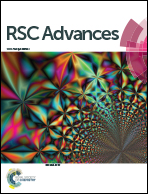Deep desulfurization of condensate gasoline by electrochemical oxidation and solvent extraction
Abstract
Organic sulfides in liquid fuels have become one of the main sources of serious air pollution. To meet the environmental requirements, deep desulfurization of high sulfur-containing liquid fuels is necessary. In this paper, the combination of electrochemical oxidation and solvent extraction was proposed to reduce the sulfur content in condensate gasoline. FTIR and GC-FPD were utilized to analyze oxidation products and confirm the reaction process. The experimental results indicated that adding a supporting electrolyte such as sodium chloride can markedly promote the oxidative desulfurization process. The oxidation products with strong polarity can be extracted by polar solvents effectively. The optimal electrochemical oxidation conditions were as follows: supporting electrolyte, electrolysis temperature, electrolysis time, volume ratio of electrolyte solution to raw oil and stirring rate were 4mol L−1 NaCl, 298 K, 50 min, 3.0, 500 rpm, respectively. After electrochemical oxidation and three-stage extraction, the sulfur content of the condensate gasoline decreased from 3478.4 μg g−1 to 13.1 μg g−1 and desulfurization efficiency reached 99.62%. Furthermore, the mechanism of electrochemical oxidation and solvent extraction desulfurization has been discussed.


 Please wait while we load your content...
Please wait while we load your content...